The legend about the battle of 150 border dogs with the Nazis. And Hitler's arrival in Ukraine in 1941
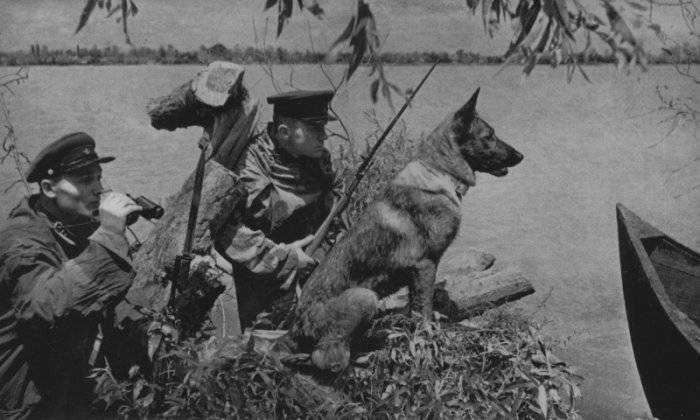
Invincible enemy infantry.
Author: Alexander Zhuravlev
I saw a terrible battle in my childhood,
And that story long ago became a legend,
As with a battalion of border guards
One hundred and fifty service dogs
The regiment of the German wolf pack was torn to shreds.
Author: Igor Krasa
In the Cherkasy region there is a unique monument to 150 border dogs who "tore" the regiment of fascists in hand-to-hand combat.
A lot has been written about this. But we decided to try to find at least some documentary details of that unique battle in books, memoirs, and even on social media forums.
First of all, I would like to note that there are two opposite points of view on this story.
On the one hand, the version that all this is just a legend and myth-making is widely spread.
On the other hand, there is also a version that this story is based on real events. But at the same time, the facts could eventually be partially exaggerated by rumor.
It was interesting for us to find what actually happened in reality. After all, there should have been at least some traces and documents? Therefore, let's try together to make out what has become clear about this hand-to-hand fight between our border dogs and the Germans.
To begin with, let's retell the story that roams the Internet.
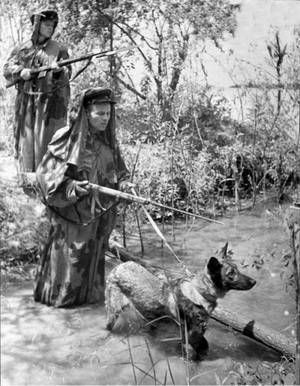
Unique battle in Legedzino
They say that it was a battle of people and dogs, unique in the history of world wars and military conflicts. From the side of the Red Army, 150 trained border dogs fought. They attacked the Nazis and for many hours stopped the advance of the hordes of fascists torn apart and stunned by what was happening.
It was the summer of 1941. Almost the very beginning of the Great Patriotic War.
The Germans treacherously attacked the USSR / Russia. And the Red Army held back as best it could, originally planned by the enemies as a blitzkrieg, the advance of the Fritzes deep into our Russia.
Fierce battles these days were fought on the Southwestern Front. On the territory of today's Ukraine.
It is known that on July 30, 1941, this legendary battle took place near the village of Legedzino.
Note. Legedzino is a village in Talnovsky district of Cherkasy region of Ukraine. Which was then part of the USSR as the Ukrainian Soviet Socialist Republic / Ukrainian SSR.
This village still exists today. According to the census, in 2001 there were about a thousand inhabitants (1126 people).
They write that near this village of Legedzino a heroic battle took place between the Soviet border guards of the battalion of the Separate Kolomyi border commandant's office of the border guard detachment of the rear of the South-Western Front of the Red Army of the USSR Armed Forces and their service dogs.
These border guards fought back from the western border of the USSR for the 39th day, fighting for every tree and every stone of the Soviet land with the German fascist invaders.
Legend has it that 4000 border guards with 500 service dogs rose to attack the superior forces of the enemy (and there were about 150 German soldiers and officers there) (most publications report exactly this ratio).
All border guards and all dogs are said to have died in this battle.
In honor of this unique battle, on May 9, 2003, a unique monument to the warrior and his faithful friend, a dog, was erected near the Zolotonosha-Uman highway by voluntary donations from World War II veterans, border troops and dog handlers of Ukraine.
Here is a very brief summary of what is known.
And now a little more detail.
They also write that in 1941, a separate Kolomyi border detachment, retreating with battles to the east, in early August near Legedzin gave battle to the German divisions "Leibstandarte Adolf Hitler" and "Death's Head", destroying many Fritzes and 17 tanks... But the forces were unequal, the ammunition ran out, after which the border guards released 150 service dogs on the enemy. This last battle for those border guards stopped the enemy offensive in this area of the front for two days.
Due to the fact that there were a lot of reprints of material about this fight, the concerned citizens began to actively discuss this topic on forums and in social networks.
It turned out that we are talking about the employees of the Separate Border Commandant's Office of the NKVD troops of the Ukrainian SSR in the city of Kolomyia (Kolomyi border detachment). Knownthat by the Order of the NKVD of the USSR No. 001279 of September 25, 1941, the Separate border commandant's office was disbanded, or rather, transformed and reassigned.
It turns out that in memory of these Soviet border guards who protected their houses from the Nazis, the Ukrainians erected a national monument.
True, it was also discovered that the same village (as is now customary in Ukraine) for political balance in 2010 erected another monument on its land - to the fighters against the Soviet regime and the participants in the anti-Bolshevik uprising in Legedzino. But this is by the way.
And we remember 1941, the end of July - the beginning of August.
It was only the second month of the war outside. It seemed to the Germans that everything was going according to their plan. They surrounded the Russians near Uman. And Hitler almost seriously intended to hold a victory parade soon in the very heart of Kiev. According to his estimates, the ancient capital of Russia was about to fall - by August 3, 1941.
At first, he even planned to celebrate the successes of his "Eastern Company" (as he called his campaign to the USSR / Russia) with a solemn march of his troops along Khreshchatyk. There was even his order to prepare such a parade for them on August 8. Mussolini (Italy) and Tiso (Slovakia) were practically invited to a glass of champagne with Hitler on Khreshchatyk.
True, Adolf did not immediately succeed in taking Kiev with a swoop. And then the Fuhrer ordered to bypass this hail from the south.
It was then that the formidable name "Green Brama" appeared in human rumor. Although on the maps of high-profile battles of the Great Patriotic War, you will not find such an area.
This is the same land that stretches on the right bank of the Sinyukha River. Those hills and forests that are near the villages of Podvyskoye (Novoarkhangelsky district of the Kirovograd region) and Legedzino (Talnovsky district of the Cherkasy region). Thousands of Red Army soldiers perished here, defending our Motherland in the first months of the battle against fascism. And this place is now inscribed in the chronicle as one of the most tragic episodes of the first months of the Great Patriotic War.
We can read about this in the book of memoirs of the famous songwriter Yevgeny Aronovich Dolmatovsky. He personally participated in those fierce battles of the Uman defensive operation.
Uman defensive operation
So, what do descendants know about this operation today?
Firstly, on the site "Memory of the People" there is such information about what happened from July 15 to August 4 in this square:
The period from 15.07.1941/04.08.1941/XNUMX to XNUMX/XNUMX/XNUMX. "
The section “description of the operation” briefly contains the following final result:
The following military units of the Southern Front took part in the operation:
6th Army (6A) Lieutenant General I.N. Muzychenko,
12th Army (12A) of Major General P.G. Ponedelina and
18th Army (18A) Lieutenant General A.K. Smirnov.
Take a look at another version of the declassified map of the Southern Front's "Uman defensive operation". On the ground, the situational positions of the Germans and ours are marked on July 15 and August 4, 1941.
It was in the last days of this operation that the army group P.G. Ponedelina (parts of the 6th and 12th armies) got into the Uman cauldron in these places. And together with the 12th Army, the very border guards with dogs from the city of Kolomyia.
Link
Green brama
There were about 15 mass graves of Soviet soldiers in nine villages in the area of Green Brama.
At the edge of the Green Brama there is a memorial sign made of red local granite, on which is carved:
In the village of Podvysokoe, in the places where the headquarters of these armies were located, memorial plaques were erected.
In 1967, a folk museum was created, which collected a lot of material about the battles in the area of Green Brama.
And those fatal events of 1941 are described by eyewitness writers.
For example, in the eponymous to lead the famous Soviet poet E. A. Dolmatovsky (1985). Yevgeny Aronovich himself was surrounded and then captured by the Germans just in the area of the Green Brama. He wrote on the cover of his book that it was
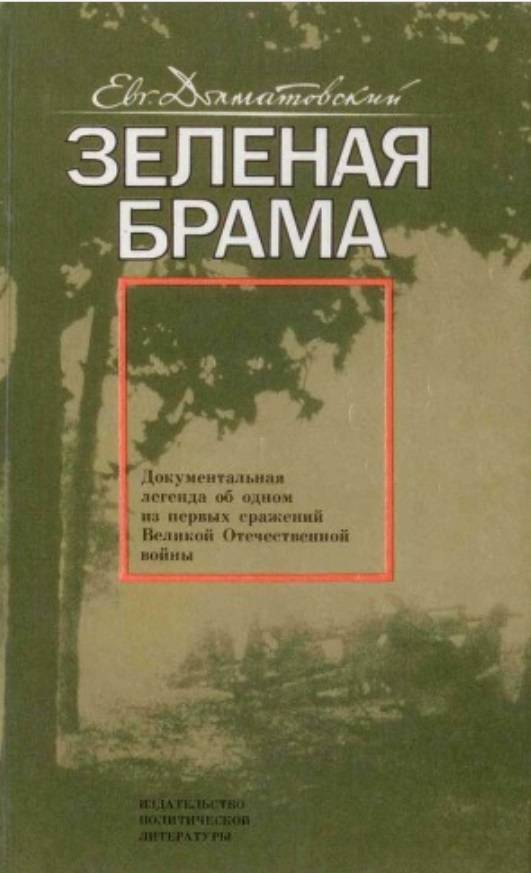
Book cover by E.A. Dolmatovsky's "Green Brama". Source: search.rsl.ru
There is one more book on the death of the 6th and 12th armies of the Southern Front of the Red Army (July 25 - August 7, 1941) in Ukrainian, which was published in 2006 (republished in 2010), “The environment of fire: the feat and tragedy of the heroes of the Green Brahma: artistic - a documentary story about a little-known page of the initial period of the Great Patriotic War ”(Sharpened in Fire). Its author is a local lore writer who also went through captivity, M. S. Kovalchuk. He, in his own way, described the tragedy at the Green Brama, also as a direct participant in those hostilities.
The third book written by the Sevastopol border guard and historian Alexander Ilyich Fuki "A story that has become a legend: A separate Kolomyi border commandant's office in battles with the fascist invaders" (1984).
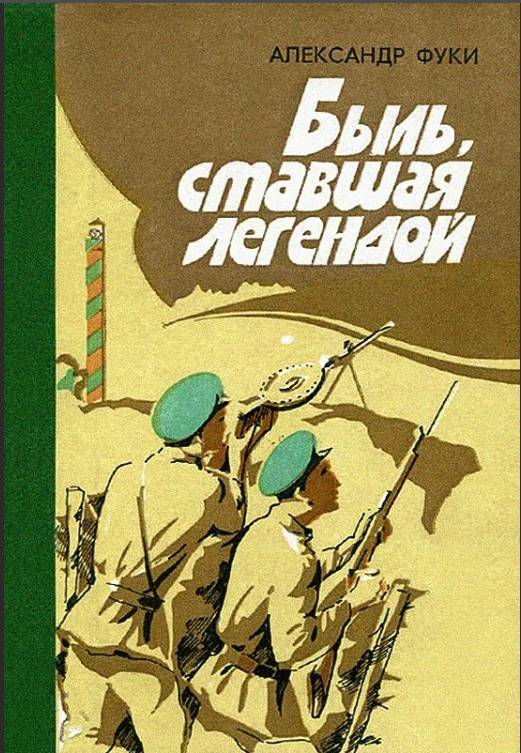
Book cover of A.I. Fuki "Byl that became a legend". Source: royallib.com
The author of this book is the former border guard of the Separate Kolomyisk Border Commandant's office, Alexander Ilyich Fuki, in his memoirs talks about the first days of the Great Patriotic War on the western border of our Motherland, in the Carpathian region, about the heroic history of the commandant’s office, its soldiers and commanders who gave their lives in the fight against fascism ... The book does not pretend to be a photographic depiction of events. But it is interesting to us as one of the evidence of that very fight. In addition, it contains the names of the border guards.
In the second chapter ("Will and Courage") there is a section "Legedzin battle":
The frontier guards of the combat escort platoon, led by Lieutenant Ostropolsky, were unrelenting observation of the area and noticed the approach of enemy motorcyclists in time. Letting them come closer, they opened aimed fire. Throwing the wounded and dead, the motorcyclists turned back. It was the vanguard of the fascist regiment sent to seize the corps headquarters. "
And the section "Four-legged friends" tells:
There remained twenty-five guides of service dogs, headed by senior lieutenant Dmitry Yegorovich Ermakov and his deputy for political affairs, junior political instructor Viktor Dmitrievich Khazikov.
Each guide had several shepherd dogs, which during the entire battle did not give a voice: they did not bark, did not howl, although they had never been fed or watered for fourteen hours, and everything around was trembling from artillery cannon fire and explosions. "
And here the incredible happened: at the very moment when the Nazis roared at the frontier guards of the third company, the battalion commander Filippov ordered Yermakov to send service dogs to the fascists.
Overtaking each other, the dogs with incredible speed overcame the wheat field, and furiously attacked the Nazis.
In a few seconds, the situation on the battlefield changed dramatically. The Nazis were at first confused, and then they fled in panic.
The border guards rushed forward in a single rush, chasing the enemy.
Trying to save their own people, the Nazis transferred fire from mortars and guns to us.
Above the battlefield, in addition to the usual explosions, screams and groans, there was a heart-rending dog barking. Many dogs were injured and killed, mostly by cold weapons... Most of them have disappeared. Many fled to the woods, not finding their masters.
What happened to our faithful friends?
The author writes that he kept this episode in his memory forever:
This battle, according to the testimony, took place just on the days when in these very places
were surrounded and were almost completely destroyed by the 6th and 12th armies of the Southwestern Front, generals Muzychenko and Ponedelin, departing from the western border. By the beginning of August they numbered 130 thousand people. Of these, only 11 thousand soldiers and officers came out of Brama to their own, mainly from the rear units. The rest were either captured or stayed there forever, in the Green Brama tract ...
It is known that the soldiers of the separate Kolomyi border commandant's office of the NKVD before the start of the war guarded the state border in the Ivano-Frankivsk region. This commandant's office consisted of about a hundred employees. And it was reinforced by the school of service dog breeding, consisting of 25 dog handlers and 150 service dogs, which belonged to the border detachment of the Kolomyia commandant's office.
A document with a list of names (possibly incomplete) of personnel (82 people) of the frontier post of the city of Kolomyia at the beginning of 1941 (February) is available in the public domain.
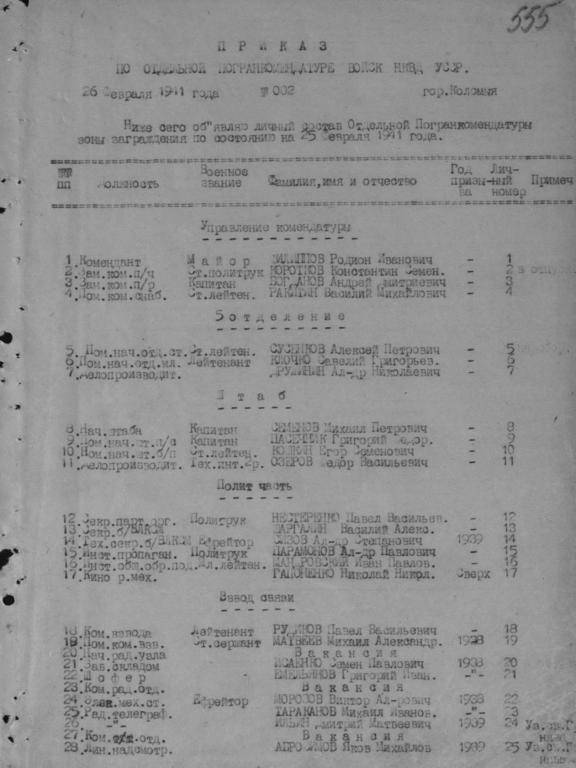
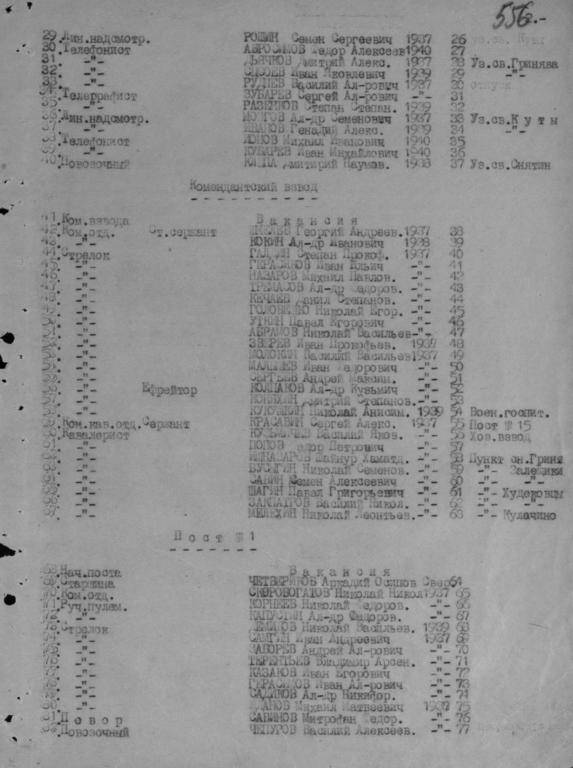
Source: forum
Having taken on the first attacks of the Wehrmacht at the end of June 1941, units of the Soviet border post were able to maintain their combat effectiveness. And by order they began an organized retreat to a new line, joining in the 8th Rifle Corps of Major General Mikhail Snegov and the 16th Panzer Division.
In those last days of July 1941, Soviet units, including Snegov's 8th Rifle Corps, to which Major Fillipov's combined border battalion was attached, found themselves, like thousands of Soviet soldiers near Uman, in a sack in the Green Brama area.
On July 30, a critical situation developed. The Germans, tightening the encirclement more and more, broke through in the area of the village of Legezino, where the headquarters of the 8th rifle corps was located.
This is how Alexander Fuki described this fight:
It was a terrible sight - a handful of the remaining border guards and their border dogs, trained, half-starved shepherds, against the Germans pouring fire on them. Sheepdogs dug into the throats of the Germans even in their dying cramps. The enemy, literally bitten and chopped down with bayonets in hand-to-hand combat, retreated, left the positions occupied with such difficulty, but tanks came to the rescue.
Bitten SS men, with lacerated wounds and screaming, jumped onto the armor of tanks and shot the dogs. "
According to circulated texts on the Internet, almost all border guards died in that battle, and the surviving dogs, according to eyewitnesses - residents of the village of Legedzino, remained faithful to their guides to the end. Those who survived from them lay down near their master and did not allow anyone to approach him. The Germans shot every shepherd. And those of the dogs who were not shot by the Nazis refused to eat and died of hunger in the field.
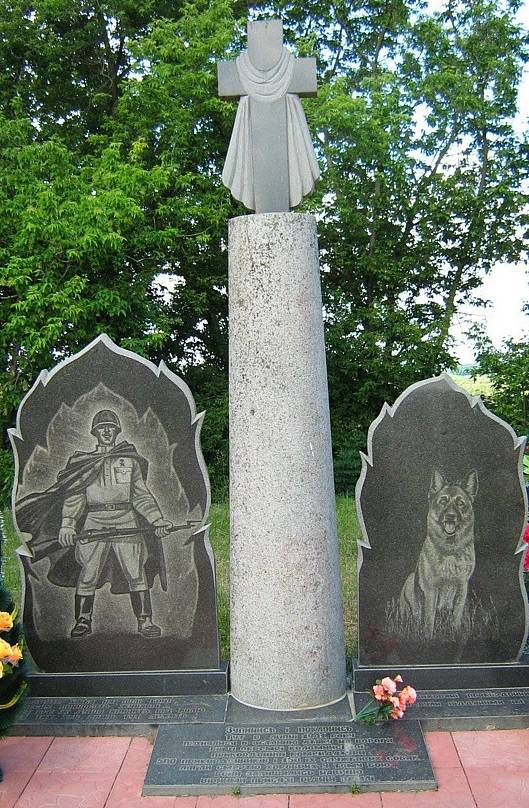
Source: pomnivoinu.ru
At the monument in Legedzino there is an inscription:
We also managed to find out that the correspondent of a major military newspaper of those years was also an eyewitness to this legendary battle. In addition, the activists began to check who was still alive from those indicated in the list of employees of the border post in the city of Kolomyia. And many interesting facts and details were revealed. But we will tell you about the notes of the military commander and those who survived in that battle in the following materials.
And now, finally, we will mention one more grandiose and very strange coincidence. Did Hitler himself come to the same village of Legedzino 28 days after the legendary hand-to-hand battle of the border guard dogs with the Nazis?
Hitler in Legedzino
It turns out that it is documented that exactly four weeks later, Hitler actually flew to Ukraine in the city of Uman on August 28, 1941. And from there I drove along the road almost to Legedzino itself. It is reported as RussianAnd foreign sources.
The fact is that the Italian troops did not manage to get to the city of Uman in time through the Russian mudslide that day, and therefore could not applaud the Fuehrer there, as planned. That is why Hitler and his retinue then left on their own to meet that Italian army column that was lagging behind in Uman. The place of Hitler's photo session with Italian soldiers arriving in Ukraine, according to some sources, is just a highway near the village of Legedzino, which is located about two dozen kilometers east of Uman.
Moreover, there is also a version on the forums that it was extremely symbolic for Hitler to meet Italian troops that day, standing with his boots on one of the ancient Scythian mounds.
Indeed, not far from Legedzino (where, by version foreign media, just and Hitler was sent on August 28, 1941) Scythian graves are located. These are several mounds that rise not far from Legedzino towards the village of Vishnopol, where, according to legend, rich families of the Scythian nomadic population are buried.
It is curious that in the public domain in Hitler's photo archive there is one photograph from that first (but far from the only and not the last) "business trip" to Ukraine. In this photo, the Hitlerite "retinue" is indeed placed on a dais that resembles such a hill or mound. (This photo is dated August 1941 and in the search "responds" to Uman / Uman).
Although, it is possible that this is just another version.
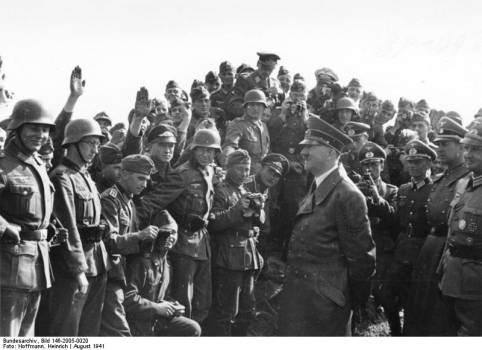
Source: hr-archive.com
Well, at the very end of our story, I would like to point out another mysterious (purely in the Ukrainian spirit) coincidence.
They say that the monument that was erected in 2003 near Legedzino on the road leading to Uman is located today exactly in the very place where the most bloodthirsty fascist of all times and peoples, Adolf, stood on August 28, 1941. Hitler.
The only question is, how can this be checked?
All hope for historians.
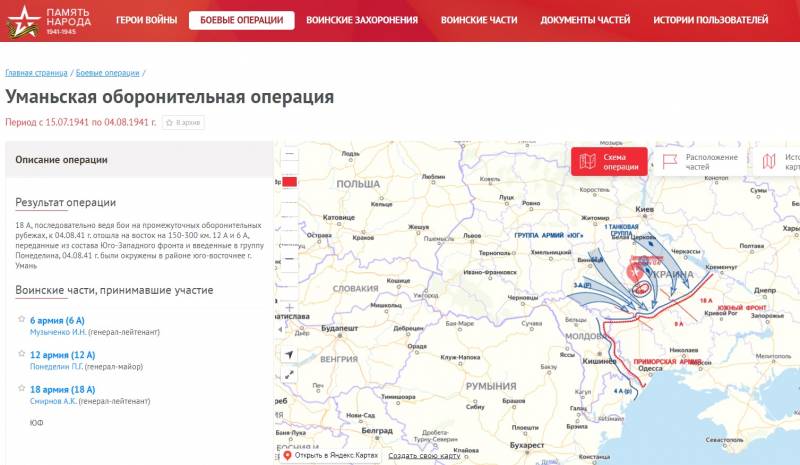
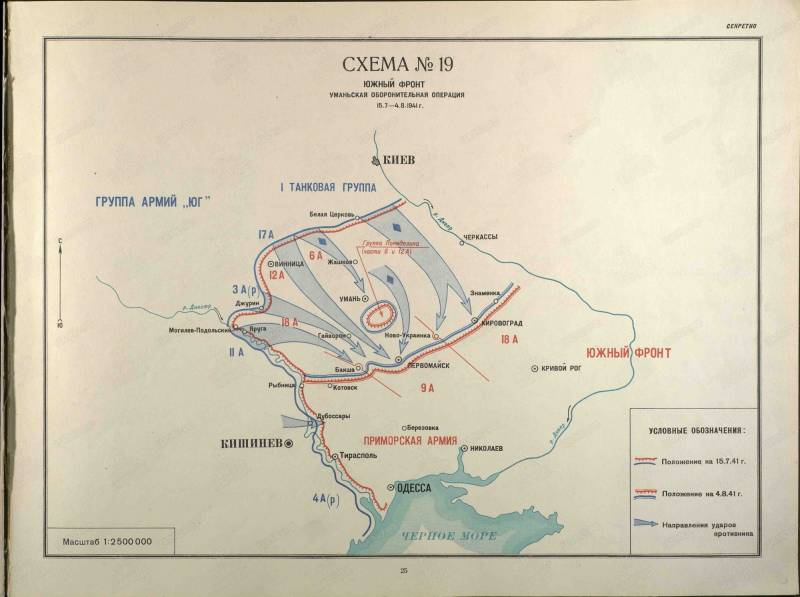
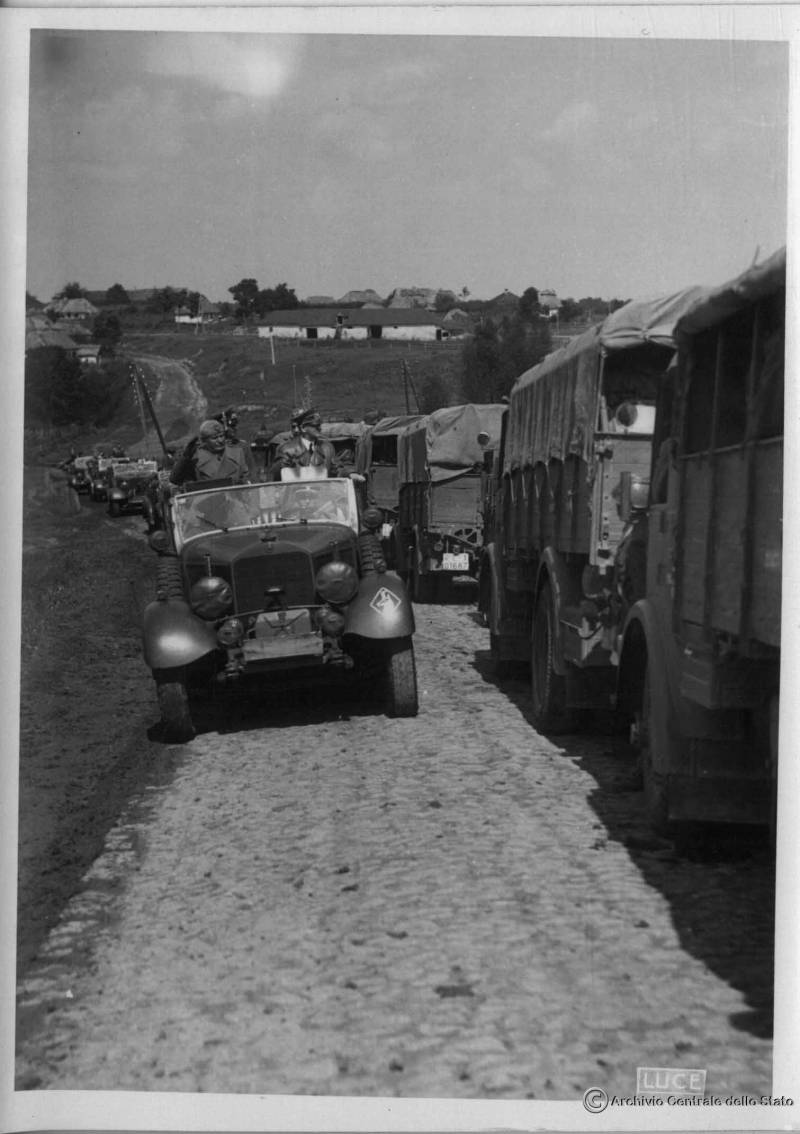
Information